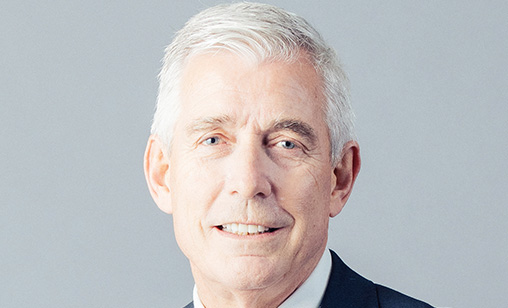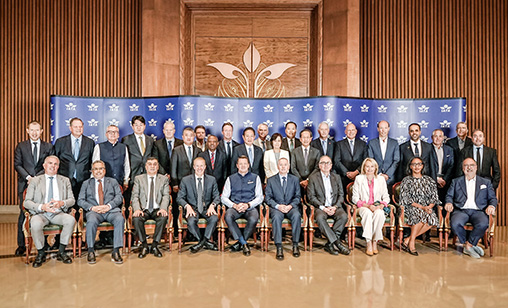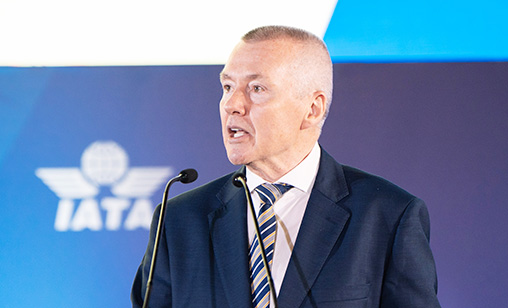Main Story
Strained relations
When airline leaders gathered in Delhi for the International Air Transport Association Annual General Meeting and World Air Transport Summit in June they were meeting in one of the world’s fastest growing aviation markets, but there was no mistaking their concerns about the industry challenges they face. Associate editor and chief correspondent, Tom Ballantyne, reports.
June 1st 2025
Amid the uncertainty facing the airline industry it may be that Air New Zealand CEO, Greg Foran, who will step down from his role at the airline later this year summed it up. Read More »
“One of the things I have learnt in the six years I have been in the airline business is always to be ready for the next side swipe,” he said.
 |
“What that side swipe is, I am not too sure. There are lots of things occurring all around the globe at the moment. Uncertainty is a word that comes to mind across so many things, whether it is demand, whether it is tariffs, whether it is the supply chain.
“A word that also sits at the front of my vocabulary at the moment is trust. And that is something I think is the currency that ultimately wins.”
Potential for side swipes and challenges to trust were outlined at the gathering by IATA director general, Willie Walsh, in his keynote address.
They are:
Conflict: The resolution of conflicts such as the Russia-Ukraine war will benefit airlines in reconnecting de-linked economies and reopening airspace.
Trade tensions: Tariffs and prolonged trade wars dampen demand for air cargo and potentially travel. Additionally, uncertainty about the Trump Administration’s trade policies will hold back critical business decisions that drive economic activity and with it air cargo and business travel demand.
 |
Fragmentation: Global standards have been critical for aviation. Fragmentation of global standards or weakening of multilateral institutions and agreements could result in additional costs to airlines from a more complicated or unstable regulatory environment.
This includes the evolution of policies on climate, trade, facilitation and a myriad of other matters impacting airline strategic decision-making and operations.
Walsh also had harsh words for aviation industry suppliers. The aircraft backlog exceeds 17,000, sharply up from 10,000-11,000 pre-pandemic, with an implied wait time of 14 years.
“Should states exit from a multilateral agreement exempting aircraft from tariffs, supply chain constraints and production limitations could be further aggravated,” Walsh said.
“Supply chain issues have had significant negative impacts on airlines, driving up leasing costs, increasing the average fleet age to 15 years from 13 years in 2015, cutting the fleet replacement rate to half the 5%-6% of 2020 and reducing the efficiency of fleet utilization by using larger aircraft than needed on some routes.”
“In 2025 1,692 aircraft are scheduled for delivery to customers,” Walsh said. “Although this will mark the highest level since 2018, it is almost 26% lower than year ago estimates.
| 'Manufacturers continue to let their airline customers down. Every airline is frustrated that these problems have persisted for so long. And indications it could take until the end of the decade to fix them are off-the-chart unacceptable!' |
“Further downward revisions are likely, given supply chain issues are expected to persist in 2025 and possibly to the end of the decade. Engine problems and a shortage of spare parts exacerbate the situation and have caused record high groundings of certain aircraft types.
“Aircraft in storage younger than 10 years is more than 1,100, constituting 3.8% of the global fleet compared with 1.3% between 2015 and 2018. Nearly 70% of these grounded aircraft are equipped with PW1000G engines.”
Sustainable Aviation Fuel (SAF) supply is another sore point for Walsh. IATA estimates the average price of SAF in 2024 was 3.1 times that of jet fuel, an additional cost of $1.6 billion. In 2025, SAF is forecast to cost 4.2 times that of jet fuel.
“This extra cost is largely the result of SAF compliance fees levied by European fuel suppliers to hedge their potential rates to include 2% SAF in the jet fuel supply.”
If there is good news for airlines it is IATA is forecasting improved profitability this year compared with 2024 and witnessing resilience despite global economic and political shifts. Its 2025 global financial performance is forecast to be US$36 billion compared with $32.4 billion in 2024.
Record revenue is predicted to be $979 billion, delivering a net profit margin of 3.7% against a 3.4% last year.
 |
Asia-Pacific airlines are on track to report a net profit increase from $4 billion in 2024 to $4.9 billion this year, representing a $2.30 profit per passenger.
The region is the largest market for revenue passenger kilometres with China accounting for more than 40% of its traffic. IATA forecasts passenger demand to be strong and sustained in the region given relaxed visa rules particularly for entry to China, Vietnam, Malaysia and Thailand.
“However, the economic landscape poses some challenges with the GDP forecast for the region, particularly China, revised down,” Walsh said.
“Although flights between China and the U.S. remain limited to 100 a week and are significantly below pre-COVID levels, over-capacity is showing signs of improvement as a result of better domestic and international network scheduling.”
Recent IATA polling reveals air passengers are happy with their experiences. In an April 2025 public opinion poll commissioned by IATA that covered 14 countries and logged 6,500 interviews almost all respondents had taken at least one flight in the last 12 months: 97% of them expressed satisfaction with their travel and 58% indicated they were highly satisfied. Around 89% agreed air travel improves their lives, 81% appreciated the availability of choice in travel planning and 78% said air travel is good value for money.
| 'The behaviour of fuel suppliers in fulfilling Sustainable Aviation Fuel (SAF) mandates is an outrage. The cost of achieving net zero carbon emissions by 2050 is estimated to be an enormous $4.7 trillion. Fuel suppliers must stop profiteering from limited SAF supplies and ramp up production to meet the legitimate needs of their customers' |
As for how important a role they see aviation playing the below trends emerged:
* 90% of respondents surveyed said air travel is a necessity for modern life
* 90% agreed air connectivity is critical to the economy
* 89% said air travel had a positive impact on societies
* 82% said the global air transport network is a key contributor to the U.N. Sustainable Development Goals
* 84% care about the success of the aviation industry
* 88% care about their ability to fly in the future.
Anna Travers says:
September 17th 2025 03:13am